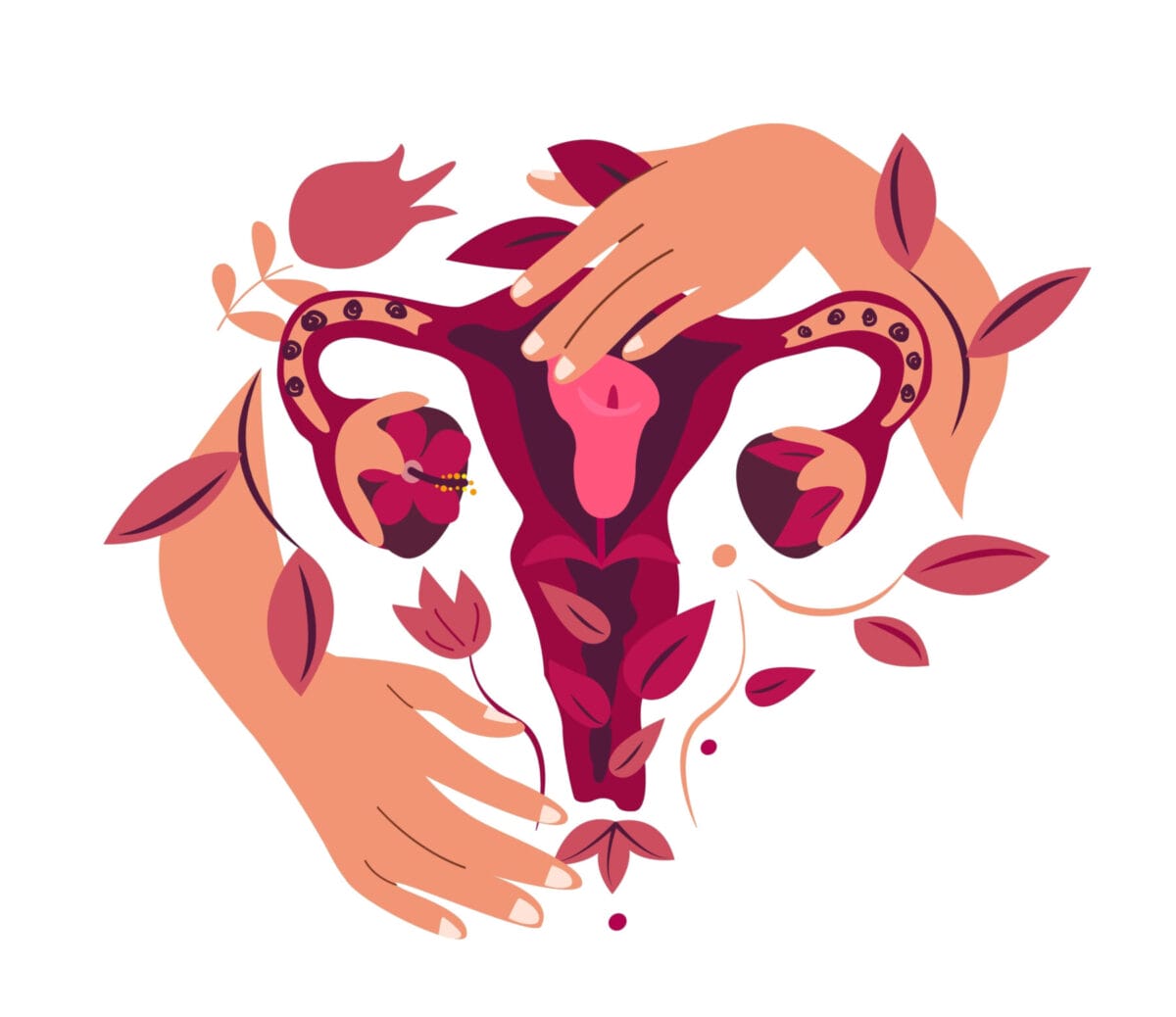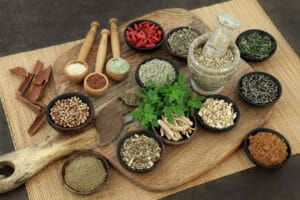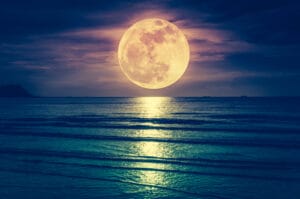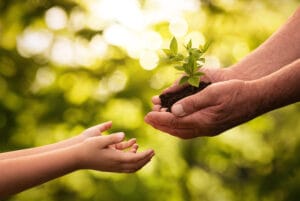In this article, you will learn about what is Vulvodynia and an Ayurvedic Analysis & Healing Line of Treatment for Vulvodynia to provide Feminine Empowerment.
By Bharat Vaidya & Marie Papazian
Dr. Bharat Vaidya: M.D., Europe; B.A.M.S.; Bombay, India
Papazian: B. Sc. Kinesiology, Certified Yoga Therapist, Ayurvedic Practitioner in training at Ayurved Sadhana
What is vulvodynia – An Overview:
Vulvodynia is characterized by chronic pain or discomfort in and around the opening of the vagina, burning, throbbing, or stinging sensation, itching, irritation, or soreness. (1) These symptoms range from mild to severe, women having periods of flare and remission which can last from months to years. Usually the vulvar tissue looks normal, although it can also appear swollen or inflamed. (1)
The pain can be constant or occasional, in the entire vulvar area or localized only at the opening of the vagina – it might occur only when the sensitive area is provoked by touch or activity. (1)
How it affects women’s day to day reality:
Although it may not be much spoken about, the number of women experiencing this symptom is very high, particularly in European countries, such as France and Belgium. It has a great impact on women’s everyday reality: physically, emotionally, psychically. (2)
- It can affect work, making sitting for long periods of time uncomfortable.
- It’s the most common cause of painful intercourse, affecting relationships (also known as dyspareunia)
- It can influence sleep – difficulty falling or staying asleep.
- May limit clothing options when tight clothes trigger the sensitivity.
- The overall reality of the symptom can lead to depression and anxiety.
Oral contraception and vaginal pain:
Hormonal contraception is one of the factors that triggers vulvodynia, possibly by constricting and having a thinning effect on the tissues of the vagina and surrounding mucosa, thus increasing nerve sensitivity and reducing the threshold to pain. (4; 5)
Furthermore, since hormones and the endocrine system are related with metaphysical dimensions, by altering the natural hormonal balance, the intrinsic alchemy of a woman’s body / mind is affected, having profound repercussions on her womb and reproductive health.
Ayurveda begins where allopathy ends:
Aside from contributing factors such as genetics, allergies, past vaginal infections, hormonal changes, etc. according to allopathic medicine, the cause of vulvodynia is unknown. Some of the treatments which consist of topical creams that numb the vulva, oral antidepressants, and anticonvulsants to reduce nerve pain, or even surgery, only result in greater complications and side effects. (2)
Ayurveda offers an understanding of the symptom based on a comprehension of the elemental constitution of the body and its imbalances, offering an empowering alternative including medicinal foods, herbs, and therapeutic procedures, as well as yoga and self-care treatments. Not only does this ancient science offer an in-depth understanding of the inner alchemy of the body, but it also offers a comprehension which takes into consideration the vagina as a sacred space where women’s femininity / shakti energy resides. Thus, working hand in hand with nature’s healing power, it guides women towards their intuitive wisdom.
Analysis of vulvodynia according to Ayurveda:
According to Ayurveda, vulvodynia involves both vata and pitta doshas. Below, we will break down each dosha and its relation to vaginal pain as well as present a simple plan of treatment that addresses the root cause of the symptom.
VATA: referred neural pain:
Vata is the energetic force / dosha composed of the air and ether elements. It governs the nervous system and the movements in the body such as respiration and elimination. Its seat is the colon. Other locations of interest in this case are also the bones, spine, and pelvis, through which the nervous system travels.
When vata accumulates in the colon due to blockages preventing it from moving fluidly, it migrates from the lower rectum to the pelvic nerves. (3)
Pain experienced in vulvodynia is thus a result of blocked or excess vata in the body which is then forced down into the pelvic nerve plexus. These nerves are connected to the uterus, vagina and surrounding tissues, meaning that the pressure or inflammation in the nerves has a corresponding effect on the tissues they innervate, generating pain. (3)
Furthermore, since the channels of the mind travel through the nervous system, along the spinal cord all the way down into the sacrum, this links psychosexual factors such as: fear, rape, miscarriages, severe problems in menstruation, fear of pain, fear of identity, fear or intercourse – to the painful sensations experienced in and around the vagina in vulvodynia.
In short, body / mind blockages push the kinetic force of vata down into the pelvis creating pressure which compresses the pelvic nerves and generates pain. This being said, our plan of treatment will thus focus primarily on removing the blockages that are in the way of the free flow of vata.
PITTA: burning sensation:
Pitta is the dosha composed of fire and water elements. It governs all metabolic and transformational processes in the body. In this particular case, we will look at blood as a substratum of pitta. The red portion of blood being fire (RBC) and the white portion being water, plasma, immunity (WBC).
According to Ayurveda, the uterus and breasts are substrata of plasma and blood. Considering that the vagina is part of the larger pelvic / uterine area – it is thus also linked to pitta dosha through the uterus and blood, which ties emotions to the burning sensations experienced in vulvodynia.
To recapitulate:
- Substrata of pitta = blood
- Substrata of blood = uterus
To further connect the dots, the seat of blood is the liver – an organ where a lot of emotions are stored; anger, frustration, bitterness, hate, impatience, discontentment, etc. – generating inflammation and excess heat which as a consequence vitiates the blood. Vata then moves this vitiated blood / pitta into the pelvis and the excess heat creates burning sensations often present in vulvodynia. (3)
Finally, we cannot speak about blood without speaking about the heart – which is also connected to the reproductive organs as it is the central pump that propagates the flow of blood through the whole body. The multidimensional universe of the heart – repressed desires, aspirations, emotions, wounds – is thus another link in the chain of psychosomatic blockages which have repercussions into the uterus and vagina.
HOW TO RESTORE BALANCE IN THE BODY GENTLY, RESPECTFULLY AND NATURALLY:
Treating blood and plasma: at the heart of OB GYN and reproductive issues:
Having highlighted the close connection between blood and reproductive health as well as the importance of clearing the channels from the blockages that affect the free flow of vata, the primary line of treatment according to Ayurveda is to treat blood and plasma as well as clear the channels.
The breasts and uterus are most often the first weak spots in a woman’s body where symptoms first emerge. If not treated the pathology advances further touching different organs, evolving into cysts, etc. – thus, the importance of treating the root cause.
Ayurveda works with food as medicine as well as various procedures and practices to balance the doshas and bring back harmony in the body / mind in tune with nature’s intelligence and the self-healing power of the body.
Objectives of the primary line of treatment:
- Detoxification of the liver and blood (mainly for pitta)
- Clearing the channels (vat and pitta)
- Cleansing / purifying the GI tract (vata and pitta)
- Balancing the digestive fire (vata and pitta)
- Facilitating elimination and downward motion (mainly for vata)
A simple, light, nourishing diet:
- Mung beans, soups, kitchari, vegetables, eggs, bone broth, bajra millet, almonds, dates, dhal
- Ginger turmeric drink
- Shatavari, manjistha, triphala or brahmi ghee (sattvic, grounding, soothing)
Gentle powerful medicinal herbs for the body / mind:
- Haritaki; excellent for serotonin (feel good hormone through gut-brain axis)
- Shatavari, Triphala Guggulu, Punarnava Guggulu, Bhringraj
A routine tuned to the cycles of day / night / seasons:
- Eating foods and vegetables in tune with the seasons
- Working towards a more regular consistent routine to balance vata.
- Eating the biggest meal during pitta time (10am -2pm) when digestive fire is at its highest.
- Avoid eating big meal after 6-7pm
Purgation:
- Haritaki, castor oil and dry ginger
- Takes out the toxins: the seat of vata being the colon, by cleansing the colon, it allows vata to ground and flow more freely.
- Purifies the blood which takes care of vitiated pitta
After a 1st wave of cleansing, rejuvenative herbs and foods are added to further nourish and rebuild the tissues, alternating between cycles of cleanse and rejuvenation for optimal results.
Self-care rituals, oils, massage:
- Almond or sesame oil massage in and around the vagina: to remove excess vata and release pain
- Crystal sticks: to help release old trauma in vagina and rekindle intimacy, femininity, and self-love
Yoni basti with dashmool, triphala or pushkarmool.
- Procedure used to treat disorders of the vagina and uterus by inserting medicinal herbs and water or oils in the vaginal tract and uterus
Mantra and energies: infection and infestation are also related with energies and the planetary system. Listening to Gayatri Mantra or lighting a candle in front of a statue of Buddha, Mother Mary, Jesus or a Holy Basil plant helps purify energies and brings auspiciousness.
Yoga & meditation: ancient practices to dive into the root of body / mind blockages:
According to ayurvedic philosophy, at the root of all disease is a mistake of intellect or faulty thinking. Yoga and meditation are wonderful practices that help ground the nervous system and facilitate the circulation of energy along the spine; thus clearing the pathways of the mind and offering a better sense of clarity. These ancient practices can be used to help women with vulvodynia tune to their intuitive wisdom and womb power by releasing the psychosomatic tensions that are in the way of their natural organic body.
For vata dosha:
We saw how excess or blocked vata forced down into the pelvic nerve plexus generates pain in the vagina and surrounding tissues, as well as the link between psychosexual factors and vulvodynia.
Yoga and meditation are both practices that shine the light of consciousness on the different blockages in the body which affect the free flow of vata – physically, mentally, emotionally and energetically. Through grounding the bone structure, stability is offered to the nervous system which puts in circulation traumas, fears and wounds trapped in the tissues, liberating the natural movement of vata dosha.
For pitta dosha:
On the other hand, we saw how vitiated pitta linked to an inflamed liver – along with vata pushing this excess heat into the pelvis – causes burning sensations. Yoga and meditation both offer a sacred space to process emotions locked in the liver linked to excess pitta / heat, slowly re-establishing a balance between the masculine and feminine energies, liver and heart, sun and moon, shiva and shakti.
Pelvic floor exercises:
Once the nervous system is appeased, nourished, and has found roots, simple awareness exercises can be added to tone the pelvic floor muscles and strengthen the area.
IN CONCLUSION:
In conclusion, through the application of a comprehensive ayurvedic line of treatment, using a combination of powerful medicinal food and herbs, purgation to facilitate the elimination of toxins, a nice balanced routine, self-care rituals, mantra, yoga, and meditation – step by step women can address the root cause of vulvodynia by working in harmony with nature and the self-healing power of the body.
Works Cited:
- “Vulvodynia – Symptoms and Causes.” Mayo Clinic, 2017, www.mayoclinic.org/diseases-conditions/vulvodynia/symptoms-causes/syc-20353423.
- “Vulvodynia; Causes, Symptoms, Management & Treatment.” Cleveland Clinic, my.clevelandclinic.org/health/diseases/17878-vulvodynia.
- “An Ayurvedic Approach to Healing Painful Vulvodynia.” AyurvedaNextDoor, 16 Aug. 2014, ayurvedanextdoor.com/an-ayurvedic-approach-to-healing-painful-vulvodynia/. Accessed 27 Mar. 2023.
- Aerts, Leen, and Nicola Pluchino. “Hormonal Contraception and Vulvodynia: An Update.” Gynecological and Reproductive Endocrinology & Metabolism, no. 03/2021, 13 Dec. 2021, pp. 156–161, gremjournal.com/journal/03-2021/hormonal-contraception-and-vulvodynia-an-update/. Accessed 27 Mar. 2023.
- BHSc(N), Jessica Lloyd-Naturopathic Practitioner. “Understanding and Treating Hormonal Vulvodynia.” My Vagina, 27 Oct. 2018, myvagina.com/understanding-and-treating-hormonal-vulvodynia/. Accessed 27 Mar. 2023.
- Practical Use of Barrier Contraceptives and Spermicides in Family Planning – A Thesis presented by Dr. Bharat Vaidya at Catholic University of Leuven, Belgium, Europe 1991.
SIGN UP TODAY FOR AYURVED SADHANA NEWSLETTER!
CHECK OUT OUR OTHER BLOGS:
All rights reserved by Ayurved Sadhana Vidyalaya,Dr. Bharat Vaidya and Anupama Vaidya. Do not distribute or publish this material.





